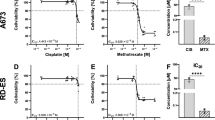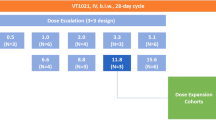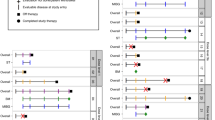Abstract
Growth curve measurements on the EMT6 tumour following treatment with cyclophosphamide indicate a growth delay of about 3 days for each 100 mg/kg of the drug. Tumours treated whilst still microscopic show a rather longer delay for the same dose. Data for the surviving fraction of cells in the tumours measured by in vitro plating at 2 h after cyclophosphamide are not compatible with the measured growth delay and realistic values for the doubling times of surviving clonogenic cells, It is concluded that there is considerable "repair of potentially lethal damage", and that there is probably no single time after cyclophosphamide treatment at which the surviving fraction of cells can be correctly measured by the in vitro plating technique. Cell loss from cyclophosphamide-treated tumours is increased only slightly over that from untreated tumours, and the regeneration of surviving cells is very rapid. In this situation, only marginal regressions in tumour volume are caused by the highest doses of the drug.
This is a preview of subscription content, access via your institution
Access options
Subscribe to this journal
Receive 24 print issues and online access
$259.00 per year
only $10.79 per issue
Buy this article
- Purchase on SpringerLink
- Instant access to full article PDF
Prices may be subject to local taxes which are calculated during checkout
Similar content being viewed by others
Rights and permissions
About this article
Cite this article
Twentyman, P. Sensitivity to cytotoxic agents of the EMT6 tumour in vivo: tumour volume versus in vitro plating. 1. Cyclophosphamide. Br J Cancer 35, 208–217 (1977). https://doi.org/10.1038/bjc.1977.28
Issue date:
DOI: https://doi.org/10.1038/bjc.1977.28
This article is cited by
-
Responses of a murine B16 melanoma to pharmacotherapy studied and compared with different assay systems
Journal of Cancer Research and Clinical Oncology (1990)



